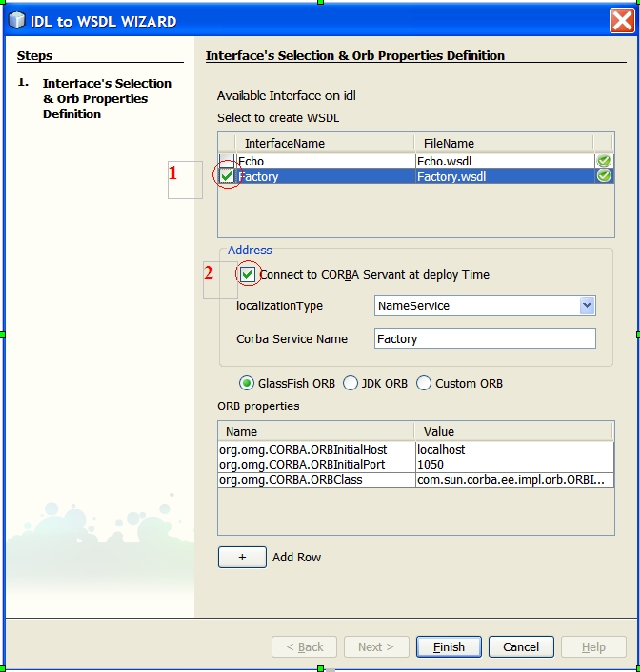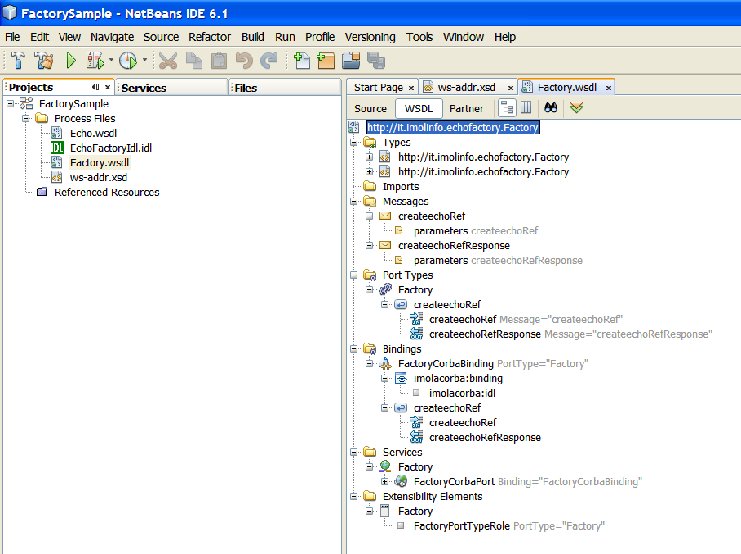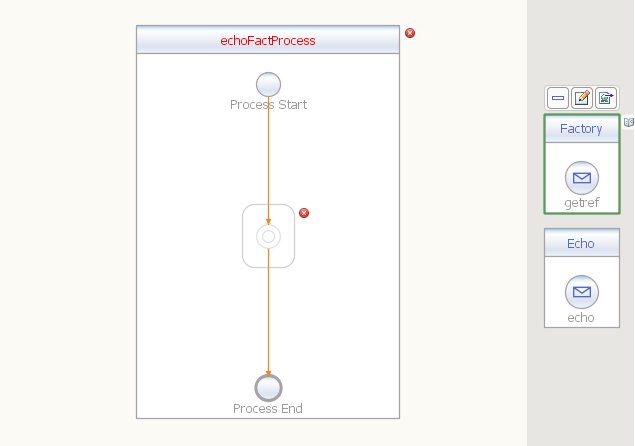

The Dynamic Interface support is an extension of the typical CORBA integration scenario. In this case a Factory servant is used for the generation of a different CORBA object, pretty much as home interface for an EJB instance. The image below illustrates the scenario. In this image only the factory is bound to naming server, while the servant objects are dynamically created.

One example of this is the IDL:
interface Echo{
string echo(in string msg);
};
interface Factory {
Echo getref(in string name);
}
In this example, Factory is a CORBA Servant (the client requires the binding with the naming server at design time to obtain a Factory reference), while Echo is dynamically created by the Factory.
In the WSDL creation the parameter is converted in:
<xs:element name="return" type="ns1:EndpointReferenceType"/>
The type is an EndpointReference (EPR). EndpointReferences are defined in the Web Services Addressing 1.0 specifications.
The XML messages managed by the component must contain the EPR for the Jbi4Corba Endpoints. In these EPR is set the IOR of the CORBA object (in the Address element). Here there is an example (ws-addressing namespaces are omitted for semplicity):
<EndpointReference>
<Address>jbi4corba:IOR:xxxxxxxxxxxxxxxxxxx</Address>
<ReferenceParameters/>
<Metadata>
<ServiceName EndpointName="EchoCorbaPort"xmlns:ns1="mynamespace">ns1:Echo</wsaw:ServiceName>
</Metadata>
</EndpointReference>
Using the Netbeans plugin we can create the WSDL from the IDL. Consider this IDL:
interface Echo{
string echo(in string msg);
};
interface Factory {
Echo getref(in string name);
}
If we right-click on the IDL, the plugin dialog appears.

In this case we must specify which interfaces are connected to CORBA servant, in this case is the Factory. For the Echo interface, instead, the Option Connect to CORBA Servant at deploy Time must be unchecked.

Now we can create the WSDLs. One WSDL for each interface is created (with the needed schemas):

The difference between these two WSDLs is that the dynamic one has empty LocalizationType and CorbaServiceName in the CORBA address:
<imolacorba:address name="" localizationType="">
<imolacorba:orb>
<imolacorba:property name="org.omg.CORBA.ORBInitialPort" value="1050"/>
<imolacorba:property name="org.omg.CORBA.ORBClass" value="com.sun.corba.ee.impl.orb.ORBImpl"/>
<imolacorba:property name="org.omg.CORBA.ORBInitialHost" value="localhost"/>
</imolacorba:orb>
</imolacorba:address>
In a BPEL we can invoke directly only the "connected" Jbi4Corba endpoints. In this example, we have:
We should add the WSDL in the BPEL editor as consumed endpoint (actually in this case the Jbi4Corba role is "provider").

Now the BPEL can be edited as usual. To obtain a reference to a Echo object and to invoke some operation on it, we have to:
The BPEL Assign operation is used to assign the EPR to Echo Endpoint using Dynamic PartnerLink Association. For the correct EPR assignment, connect the returned EPR (params return) with the Echo PartnerLink. The BPEL editor changes the assignment as shown below:

Once assigned the PartnerLink, we can invoke it from BPEL as usual.
